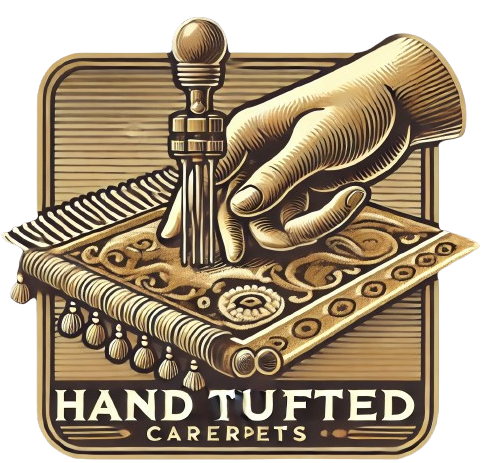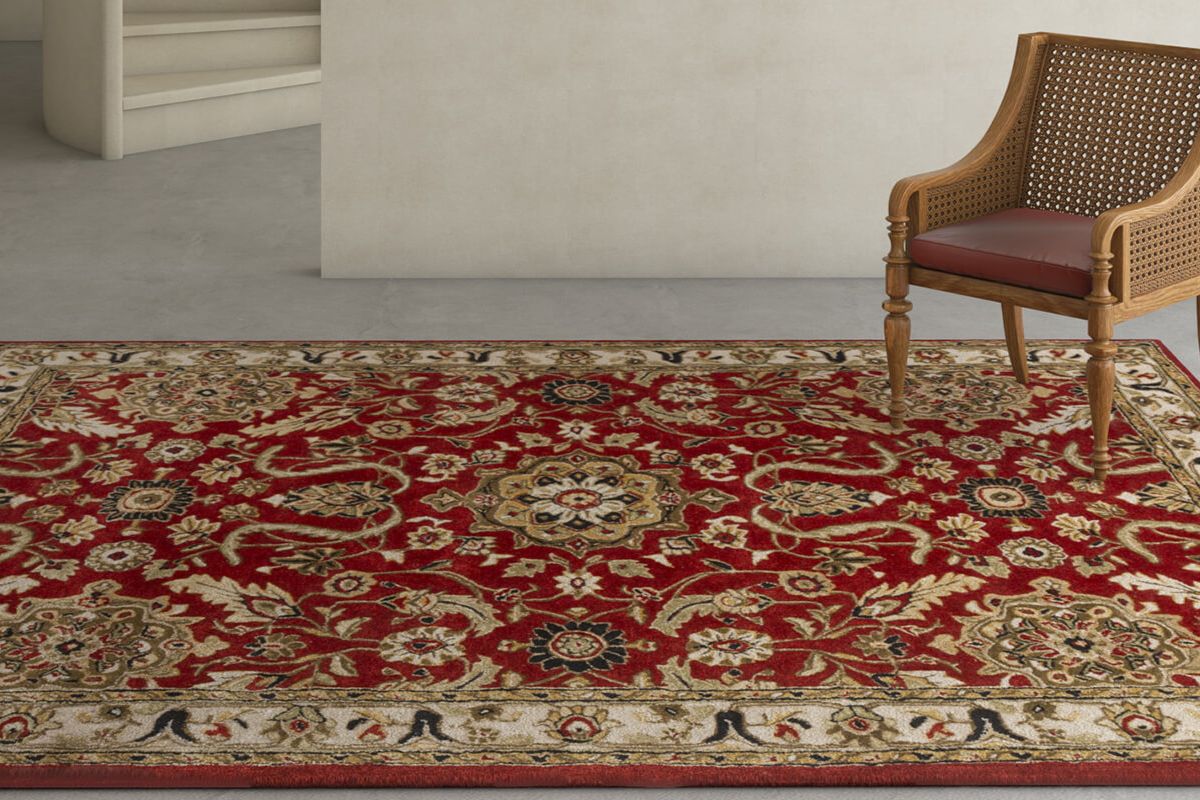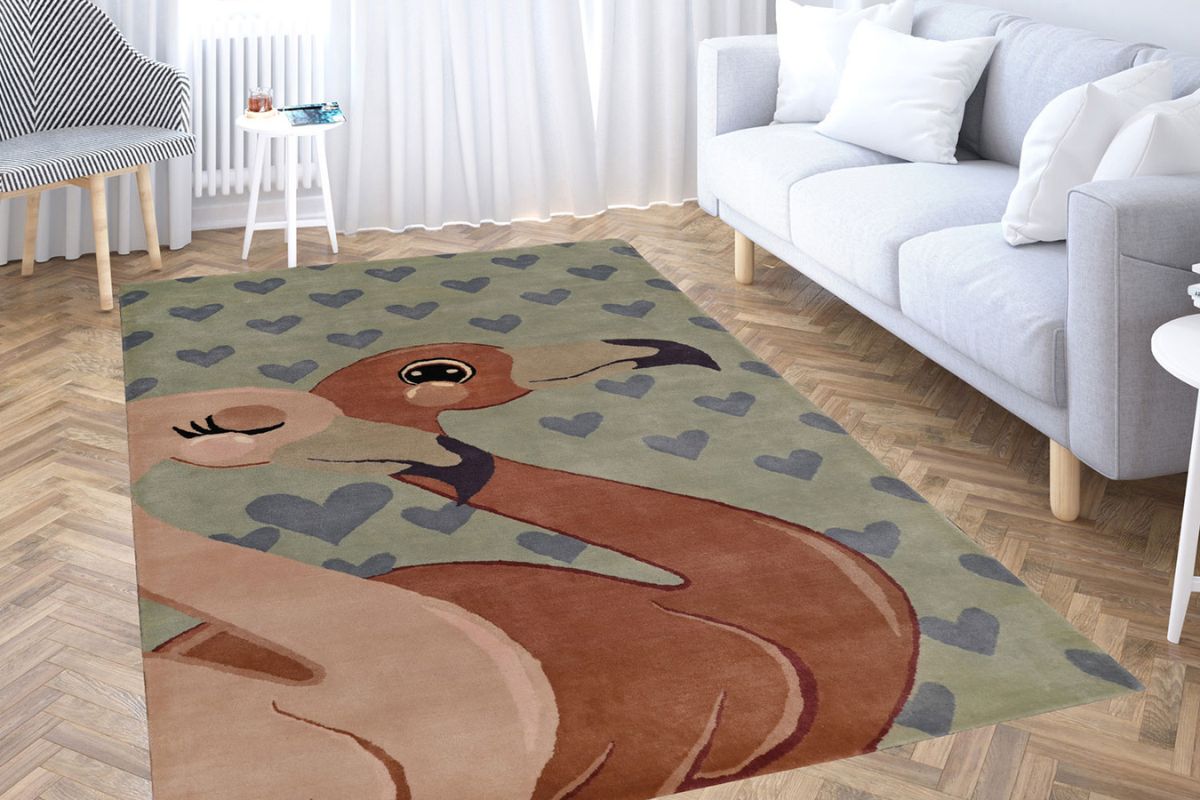As eco-conscious living becomes a mainstream priority, many homeowners are seeking sustainable flooring solutions. Hand-tufted carpets, known for their intricate designs and quality, are a popular choice. But how eco-friendly are they? This guide delves into the materials, processes, and environmental impact of hand-tufted carpets to give you a clear picture of their sustainability.
What Are Hand-Tufted Carpets? A Quick Overview
Hand-tufted carpets are crafted using a tufting gun that pushes yarn through a canvas backing, creating the carpet’s pile. While faster to produce than hand-knotted rugs, they retain a handmade essence that appeals to many. The process is a hybrid between machine production and true handcrafting, allowing for intricate designs and custom options. These carpets offer a balance between cost and quality but require careful evaluation to determine their environmental footprint.
Materials Matter: Natural vs. Synthetic in Hand-Tufted Carpets
The eco-friendliness of a hand-tufted carpet starts with the materials used. Wool and cotton are common natural fibers that offer sustainability benefits; they are renewable and biodegradable. Wool, in particular, acts as a natural insulator and contributes to energy efficiency in homes. On the flip side, synthetic fibers like polyester and nylon, while durable and budget-friendly, are derived from petrochemicals and contribute to pollution. Manufacturers seeking a sustainable approach may use recycled materials, creating a balance between performance and eco-friendliness.
Behind the Scenes: Environmental Impact of the Manufacturing Process
Hand-tufting is less energy-intensive than full-scale machine production, but the environmental impact varies. The primary concern lies in the adhesives and backing materials used, which can contain volatile organic compounds (VOCs) that affect indoor air quality. Eco-conscious manufacturers address this by using non-toxic adhesives and sustainable backing materials. The reduction of waste through repurposing trimmings and using renewable energy in production can significantly minimize the ecological footprint of these carpets.
Natural Fibers as Champions of Sustainability
Wool and organic cotton are considered eco-friendly materials for a reason. Wool is renewable and biodegradable, breaking down naturally and enriching the soil without harmful residues. Certified organic cotton, although sustainable, must be farmed responsibly to avoid significant water and pesticide usage. When sourced ethically, these materials contribute to a lower environmental impact. Consumers should look for certifications like GOTS and OEKO-TEX to ensure the fibers meet eco-friendly criteria.
The Reality of Synthetic Fibers: Are They Eco-Friendly?
Synthetic materials such as polyester and nylon have their pros and cons. While they provide resilience and stain resistance, their production is energy-intensive and reliant on non-renewable resources. Additionally, synthetic carpets can shed microplastics, posing environmental hazards. Some manufacturers use recycled synthetic fibers to mitigate this impact, making them a better choice than new synthetic products. Eco-conscious buyers must weigh the benefits of durability against the drawbacks of non-biodegradability.
Green Practices in Production: What Sets Eco-Friendly Manufacturers Apart?
Sustainable manufacturers implement practices that limit environmental damage. This includes using renewable energy, non-toxic adhesives, and natural latex or jute backings. Waste reduction through recycling leftover materials and closed-loop systems further enhances the eco-friendliness of their production processes. Certifications like Green Label Plus and Cradle to Cradle are reliable indicators that a manufacturer prioritizes sustainability. These practices ensure lower emissions and minimal waste.
Longevity and Lifecycle: Why Durability Matters
The lifespan of a hand-tufted carpet plays a crucial role in its sustainability. High-quality hand-tufted carpets can last up to 20 years or more with proper care. Durable products reduce the frequency of replacement, thereby conserving resources over time. While synthetic options may resist wear and tear better, natural fiber carpets offer better end-of-life disposal options as they are compostable. Ensuring the carpet is maintained correctly helps extend its lifecycle and supports sustainability goals.
Disposal Dilemmas: Recyclability and End-of-Life Solutions
Disposal options for hand-tufted carpets depend on the materials used. Wool and cotton-based carpets are biodegradable and can be recycled or composted, reducing landfill waste. Synthetic options, however, pose a greater challenge due to their complex compositions. Advances in recycling technology are making it possible to repurpose some synthetic materials, but the process remains energy-intensive. Consumers should opt for carpets with biodegradable or recyclable backing materials and support brands that offer take-back or recycling programs.
Eco-Certifications: How to Spot Truly Sustainable Carpets
Certifications such as GOTS, OEKO-TEX, and Cradle to Cradle are key indicators of a carpet’s eco-friendliness. Green Label Plus ensures low VOC emissions for better indoor air quality, while GoodWeave certification guarantees ethical labor practices. By understanding these certifications, consumers can confidently choose carpets that align with their eco-friendly values. These labels verify that the products meet strict environmental and social standards, supporting both sustainability and fair practices.
Tips for Consumers: Making an Informed Sustainable Choice
Choosing an eco-friendly hand-tufted carpet involves more than selecting natural fibers. Consumers should check for certifications and ask manufacturers about their adhesives and backing materials. Durable carpets made from high-quality natural fibers, maintained well, will contribute to a longer lifecycle. Look for companies that offer recycling or take-back options for when the carpet reaches the end of its use. This ensures that your purchase aligns with sustainable living principles and supports the environment.
Hand-Tufted Carpets vs. Other Eco-Friendly Flooring Options
Comparatively, hand-tufted carpets have both advantages and limitations in sustainability. Bamboo and reclaimed wood are highly renewable, durable options, though they may lack the warmth and sound-dampening properties of carpets. Hand-tufted carpets made with natural fibers offer comfort and insulation but may have a higher carbon footprint due to production adhesives. By evaluating these options, consumers can find the best fit for their sustainability goals and lifestyle needs.
Conclusion
Hand-tufted carpets can be eco-friendly, but their impact varies based on materials, manufacturing practices, and disposal options. By choosing carpets made with natural fibers, verifying sustainability certifications, and supporting responsible manufacturers, homeowners can align their flooring choices with eco-friendly living. Understanding these elements ensures that hand-tufted carpets contribute positively to an environmentally conscious home.







